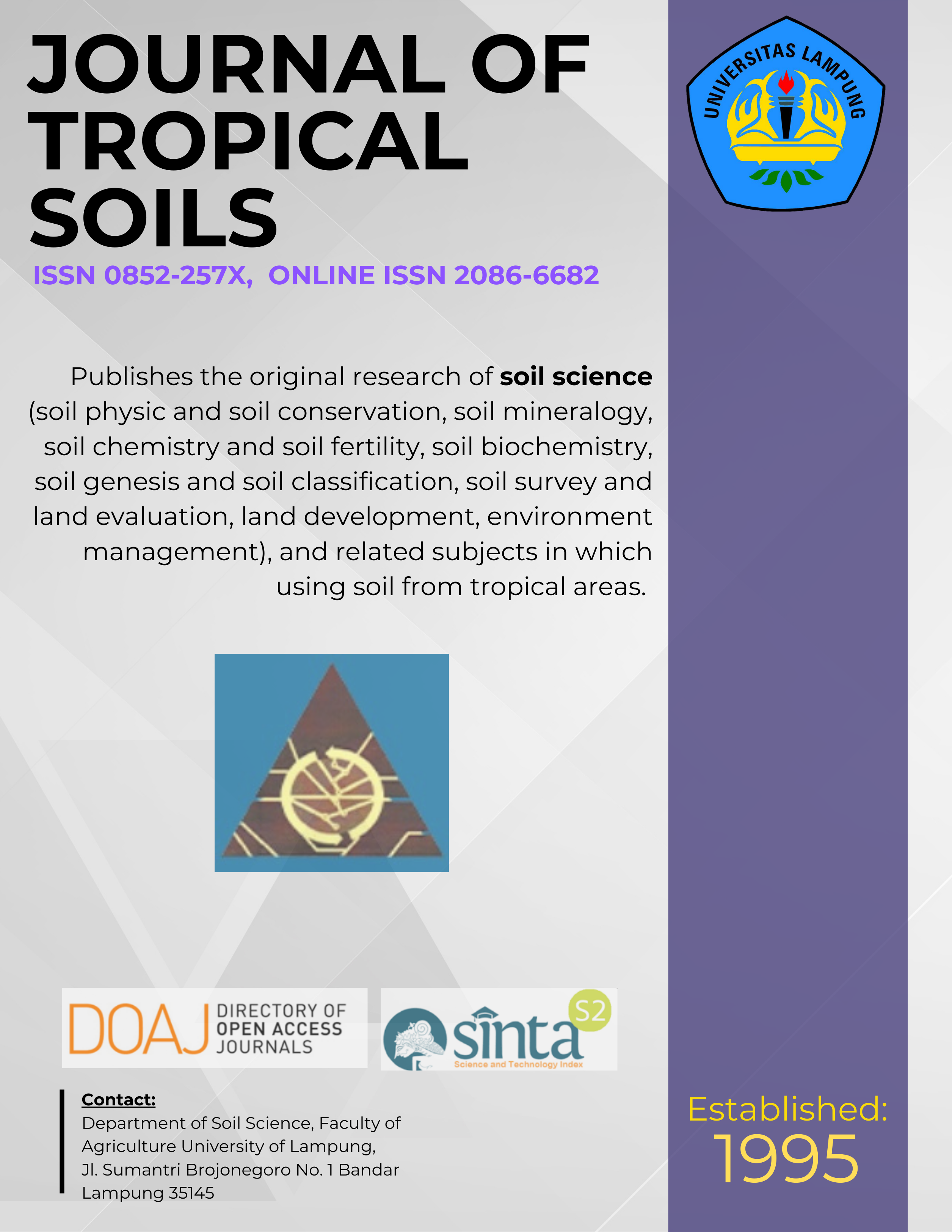Study of Root Exudate Organic Acids and Microbial Population in the Rhizosphere of Oil Palm Seedling
Main Article Content
Abstract
Mutual interaction between plants and microbes occured in the rhizosphere is expected to increase productivity of crops or soil fertility for agriculture. Plants excrete root exudates to attract microbes, and then microbes obtain habitat and food supply from plants and can fulfill the nutrient requirements through assisted enzymatic activity. The objective of the research was to study the types and amounts of root exudate organic acids, microbial population, and the relationship between root exudate organic acids and microbial population in the rhizosphere of oil palm seedlings. The study was conducted in a greenhouse using a planting medium of sterile quartz sand. The study was conducted using two factorials completely randomized design with three replications. The first factor was oil palm seedling age (control / no oil palm seed, 1, 3, 6, 9 and 12 months-old of oil palm seedlings) and the second factor was the periods of seedling growth (45, 90, 135 and 180 days), so in total there were 72 experimental units. The result of High Pressure Liquid Chromatography (HPLC) analysis revealed that four kinds of organic acids were observed in the rhizosphere of oil palm seedlings, with the highest concentration were: acetic acid (1.66 ppm), citric acid (0.157 ppm), malic acid (2.061 ppm) and oxalic acid (0.675) ppm. The highest total population of microbes, fungi, Azotobacter, phosphate solubilizing bacteria (PSB) and phosphate solubilizing fungi (PSF) were 19.38 × 106 cfu g-1 soil, 3.28 × 104 cfu g-1 soil, 12.09 × 105 cfu g-1 soil, 8.39 × 104 cfu g-1 soil and 1.15 × 104 cfu g-1 soil, respectively. There are positive correlations between root exudate organic acids and total microbes, fungi, Azotobacter, PSB and PSF are.
Keywords: microbes, organic acids, rhizosphere, root exudates
Downloads
Article Details
Section
License for Authors
Authors who publish with this journal agree to the following terms:
- Authors retain copyright and grant the journal right of first publication with the work simultaneously licensed under a Creative Commons Attribution License that allows others to share the work with an acknowledgement of the work's authorship and initial publication in this journal.
- Authors are able to enter into separate, additional contractual arrangements for the non-exclusive distribution of the journal's published version of the work (e.g., post it to an institutional repository or publish it in a book), with an acknowledgement of its initial publication in this journal.
- Authors are permitted and encouraged to post their work online (e.g., in institutional repositories or on their website) prior to and during the submission process, as it can lead to productive exchanges, as well as earlier and greater citation of published work (See The Effect of Open Access).
License for Regular Users
Other regular users who want to cite, distribute, remix, tweak, and build upon author’s works, even for commercial purposes, should acknowledge the work’s authorship and initial publication in this journal, licensed under a Creative Commons Attribution License.

